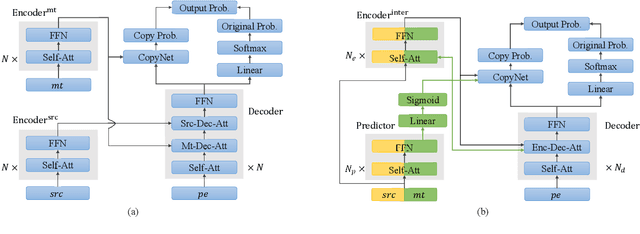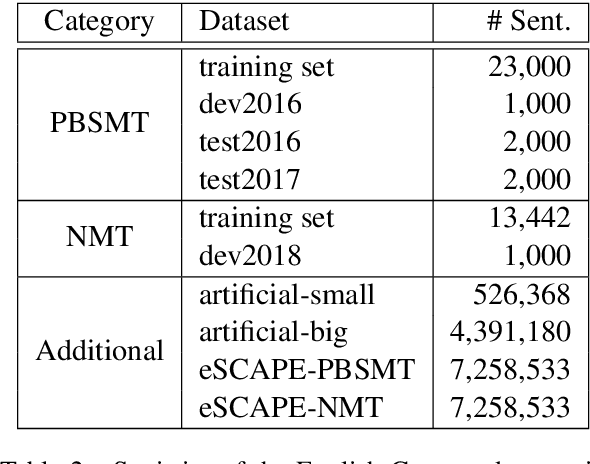Learning to Copy for Automatic Post-Editing
Paper and Code
Nov 09, 2019



Automatic post-editing (APE), which aims to correct errors in the output of machine translation systems in a post-processing step, is an important task in natural language processing. While recent work has achieved considerable performance gains by using neural networks, how to model the copying mechanism for APE remains a challenge. In this work, we propose a new method for modeling copying for APE. To better identify translation errors, our method learns the representations of source sentences and system outputs in an interactive way. These representations are used to explicitly indicate which words in the system outputs should be copied, which is useful to help CopyNet (Gu et al., 2016) better generate post-edited translations. Experiments on the datasets of the WMT 2016-2017 APE shared tasks show that our approach outperforms all best published results.
 Add to Chrome
Add to Chrome Add to Firefox
Add to Firefox Add to Edge
Add to Edge